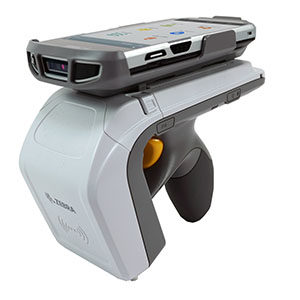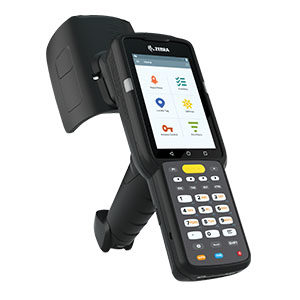RFID has long had the promise of being the disruptive technology for IT asset management, but the COVID pandemic has created a new urgency for global enterprises around hardware asset management and more specifically, automating asset tracking.
“What will it cost and how will that impact my budget?”
Understandably, this is usually the first thing we are asked. This was originally addressed in Simple Cost Analysis for RFID Options, but so much has changed since then, it’s time for an update with more specifics around the models available now. We addressed some of the considerations you need to make when figuring out if RFID is the right answer for your hardware asset management needs compared to other options in the post, To RFID or Not RFID – That’s the Question for IT Asset Tracking. If you want to learn more about the most common questions we receive from our customers who are considering RFID technology, see our RFID Asset Tag Expert Q&A.
Over the last 10 years, RFID has drastically come down in cost, especially considering inflation. The price reduction coupled with the increased efficiency and productivity asset managers get with RFID, can create massive ROIs for companies. I thought it might be helpful for those interested in making the switch to RFID to present a brief summary of the options available, including current pricing and applications.
Now, I want to emphasize that price is not the guide for the right answer. Certainly price can determine feasibility, but you really want to understand your use case, what you are trying to achieve or how you plan to do it. If you are looking for extreme automation, security or data integrity, RFID has many advantages but it still may not be right for you.
Passive RFID
Passive RFID tags are non-powered, less expensive tags with lower read range. These tags are used to read tags that move through portals, or by handheld devices in closer proximity.
Passive RFID is based on a standard, GEN2, meaning you can mix and match passive RFID tags with passive RFID reader hardware. The main advantages over barcode being range and speed.
There are many types of RFID tags for different applications. The size of the tag and the material on which its placed impacts read range significantly.
Tag pricing also varies widely. Pricing is very much dependent on the volume of tags purchased, encoding services and other customizations. A general rule of thumb pricing is below.
Basic RFID tags: $.10 – .20 USD ea.
- Good for paper or other non-metal, non-liquid material printable
- Will not work for IT or metal assets
On-Metal RFID tags: ~$1 USD ea.
- Passive tags that work on metal surfaces require spacing between the chip and the metal material. Certain on-metal tags actually use the metal surface as part of their antenna, improving the readability of the tag.
- Required for servers or metal-equipment, especially in a data center
Vehicle / Container tags: ~$5 USD ea.
-
- Large, license-plate-sized tags for tracking vehicles, containers and other large objects over a longer distance.
Passive handheld readers:
A human waves the scanner near assets and great for manual auditing of a location, data center rack, etc. Prices vary depending on the range and power of reader, and if you’re buying in volume you may pay less. Some popular models with our clients include:
Sleds: A sled is an RFID reader that pairs with a smartphone, tablet or computer to process RFID tag reads.
Most popular – Zebra 8500 : basic model $1,600-2,000 US (including the accessory pack with a charger and a 3-year maintenance plan)
Mobile computers are integrated Android devices with embedded RFID readers that work independently.
Most popular – Zebra 3300: basic model $2,500-3,000 US (including the accessory pack with a charger and a 3-year maintenance plan)
Fixed Position passive RFID
Scanners are installed in a doorways, conveyer belts or other fixed locations that detect assets moving through a read zone and publish updates to listening systems. Popular choices for IT asset tracking include
Impinj Xspan –$5,000–10,000 US per portal for hardware, installation and configuration
Zebra FX9600 $5,000–15,000 US per portal for hardware, installation and configuration
Active RFID
Active RFID is proprietary technology that comes in multiple forms. UHF900Mhz, Wifi or Bluetooth Low Energy (BLE). In all cases, Active RFID tags are self-powered and, therefore, larger. They broadcast their signal over a much greater distance, enabling real time location system (RTLS) tracking and environmental monitoring.
Due to the cost, Active RFID is less popular for IT asset management except for highly specialized and secure environments. That said, prices steadily come down and we’re seeing more implementation of active RFID in testing phases.
RFID Integration
Any RFID system can be integrated with asset databases through web services or files-based mechanisms. All RFID solutions are able to publish updates as tags are read or tag states change. AssetTrack uses intelligent automation tools that will export asset updates to a format that can be scheduled to import into systems like ServiceNow.
Bottom line
The more you pay up front, the more automation you get.
This is quite a complex topic and the technology is continually changing, but I hope the information above gives you a high-level overview into the questions / needs you should consider in order to make the best decision for your business.
Keep in mind, you don’t have to do this alone. AMI helps companies build their business case and evaluate their specific needs, so they make the right RFID choice. Unlike other companies who are selling either active or passive technology and will tout the benefits of one over the other, we offer all tagging technologies – barcode, passive and active RFID – so we can present all the choices and help you compare and contrast every option.
If you’re interested in learning more? Let’s schedule a demo of AssetTrack® and discuss your RFID needs.
To see how much you could be saving in labor and productivity, check out our simple online calculator.




